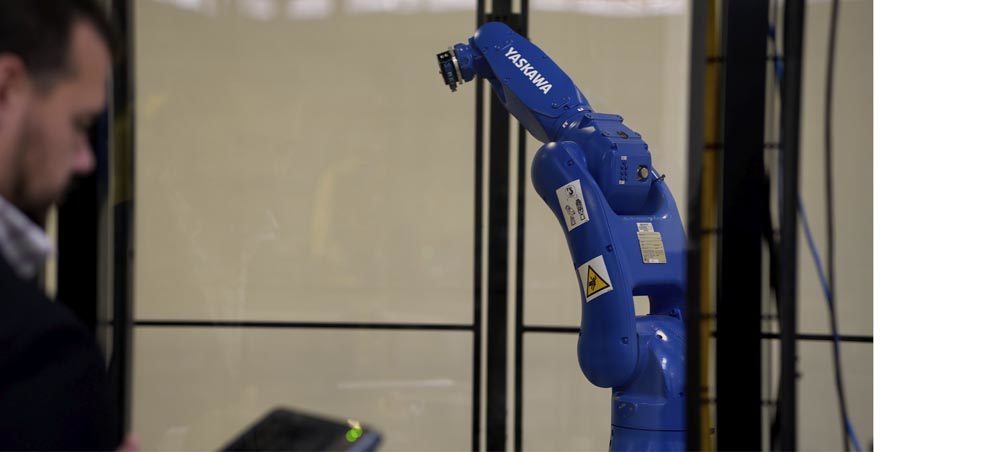Master Power Transmission’s Automation Transformation with Ready Robotics
A leadership perspective on advanced automation integration
In the highly competitive gear manufacturing industry, Master Power Transmission (MPT) recognized the need for innovation. To achieve this, MPT partnered with Ready Robotics, undertaking a transformative journey into advanced automation through their Automation Readiness Assessment (ARA).
Objective
MPT’s objective was clear: to effectively integrate advanced automation into their manufacturing processes, thereby enhancing efficiency, optimizing labor, and promoting sustainable practices.
Solution: Automation Readiness Assessment (ARA)
The ARA, developed by Ready’s VP of Manufacturing Technology & Automation Allan Gibson, provides a systematic approach to identifying and scoring potential automation opportunities within a production facility.
The ARA evaluates both traditional and untraditional automation opportunities including how to deploy automation for high-mix operations that previously seemed unattainable. The end goal of the ARA process is to deliver a report and executive team summary that lays out a blueprint for successfully deploying automation that can scale across a facility or multiple facilities.
“We value experts and their capabilities,” said Ryan Roberson, President/COO of MPT. “We were confident that Ready Robotics would layout a game plan after witnessing our processes.”
Implementation Strategy
The ARA involved a detailed data collection phase, focusing on MPT’s technical, financial, and operational aspects.
“Our biggest challenges were setup reduction, automation, and process compression,” Roberson noted. “The ARA confirmed some of our ideas and put real numbers to a plan, something we could only roughly speculate before.”

Robot resurrection: The ‘Bob Ross’ paint cell universal robot.
Discovery of Automation Opportunities
Through the ARA, Ready Robotics identified several key automation projects. This included reviving an underutilized painting robot, named ‘Bob Ross’, and five new automation projects focusing on machine tending.
“Our experience in deploying automation prior to the ARA was very limited,” admitted Roberson. “Small obstacles were huge roadblocks due to our lack of engineering expertise in automation.” These initiatives were designed to elevate productivity, reduce lead times, and incorporate digital traceability, essential for gear manufacturers in highly regulated industries such as aerospace.
Results: Enhancing Productivity and Efficiency
The integration of ‘Bob Ross’ was a highlight, showcasing Ready Robotics’ expertise in maximizing underused assets.
“We were impressed with the overall ARA process,” said Roberson. “What makes Ready’s approach unique is the focus on the entire value stream rather than just the automation opportunity. This approach ensures that the automation efforts are going to be focused on the best overall business impact.”
The other automation projects, focused on machine tending, showed promising financial justifications. “The implementation team’s capability and professionalism have been impressive,” Roberson commented.
A Q&A with, CEO of Master Power Transmission Michael Cinquemani |
Strategic Impact and Industry Benchmark
MPT’s collaboration with Ready Robotics has established new benchmarks in gear manufacturing automation.
“There is a path to industrial automation for MPT,” Roberson reflected. “With Ready Robotics’ support, our speed of identification and implementation will continue to improve.”
Industry-Wide Implications and Key Takeaways
This case study serves as a valuable example for gear manufacturers contemplating automation. “If other AGMA members are unsure where to begin or don’t have the contacts to develop real costs or designs, the ARA is a fantastic first step,” advised Roberson.
Resources and Guidance for Gear Manufacturers
Ready Robotics provides extensive resources for companies exploring automation. Their website, LinkedIn, and YouTube channel offer training materials and insights into managing high-mix manufacturing environments.

Ready Robotics’ ForgeOS reduces programming time down to minutes.
Conclusion
Master Power Transmission’s journey with Ready Robotics demonstrates the transformative power of strategic automation.
“Undergoing this process showed us that there is a path to industrial automation for MPT,” concluded Roberson.
For gear manufacturers seeking to remain competitive, this case study offers valuable insights and lessons, showcasing that embracing advanced automation is a strategic necessity in today’s evolving market. MPT’s experience serves as an inspiring model, illustrating that with the right approach and expert support, transitioning to advanced automation can significantly elevate manufacturing capabilities.







